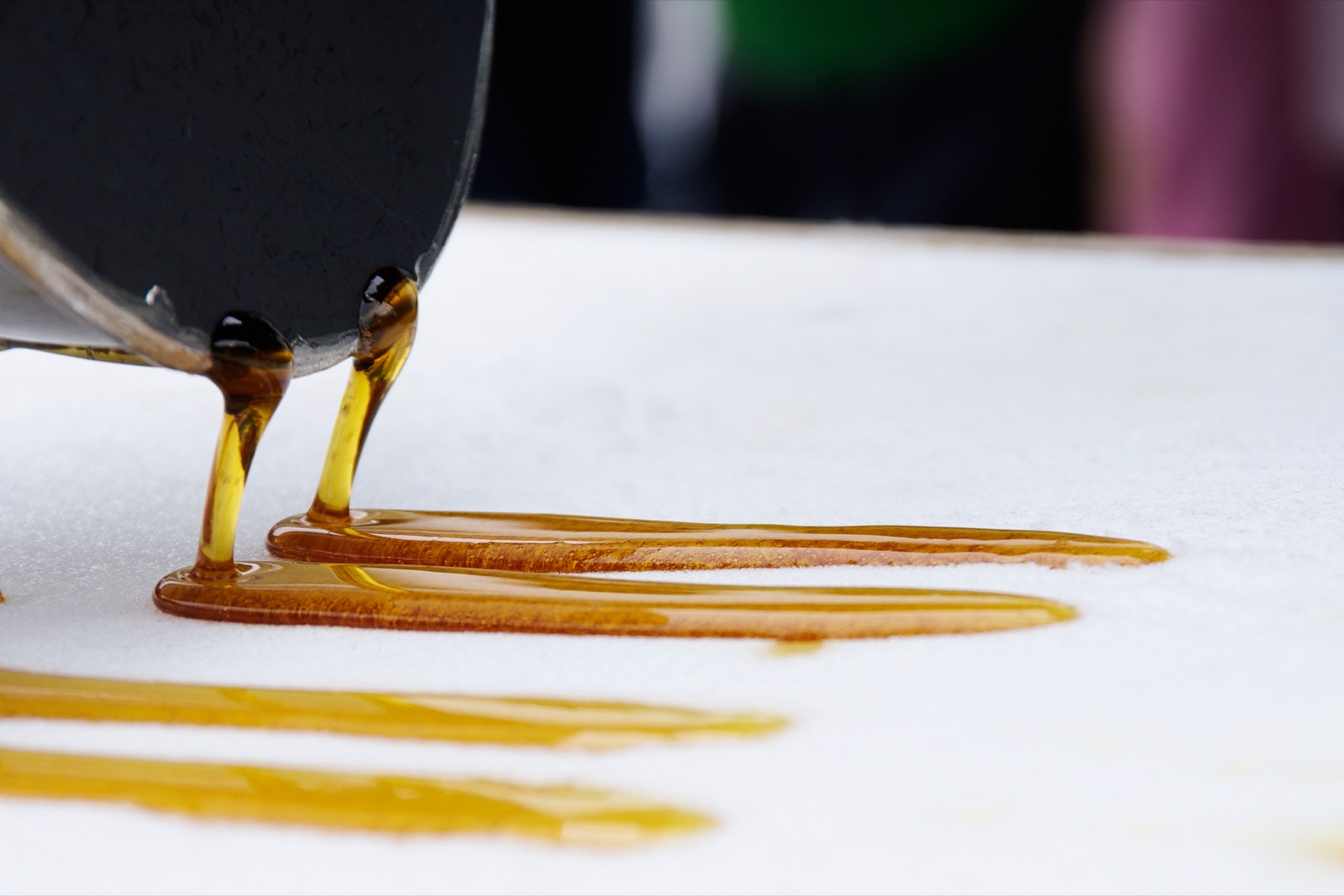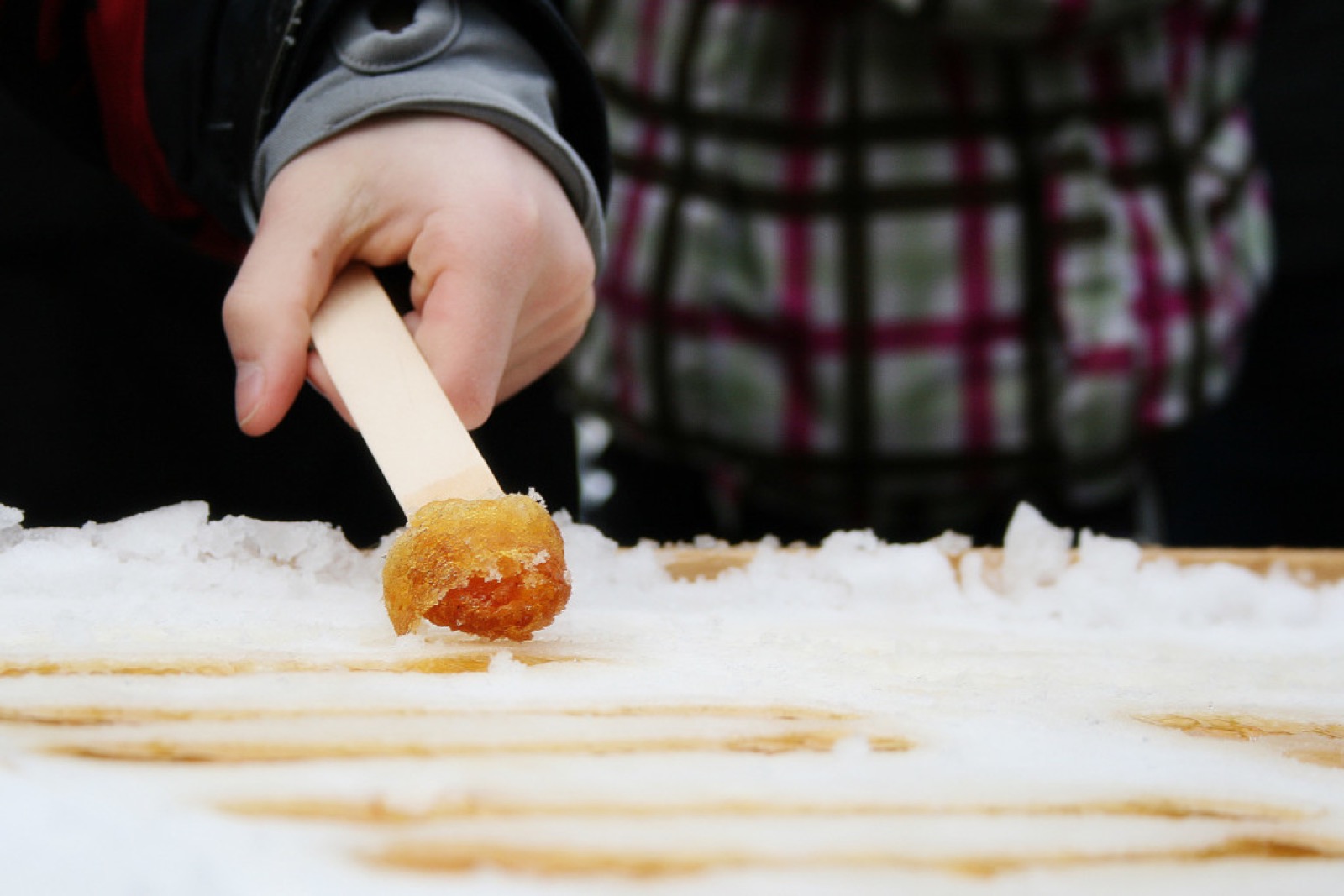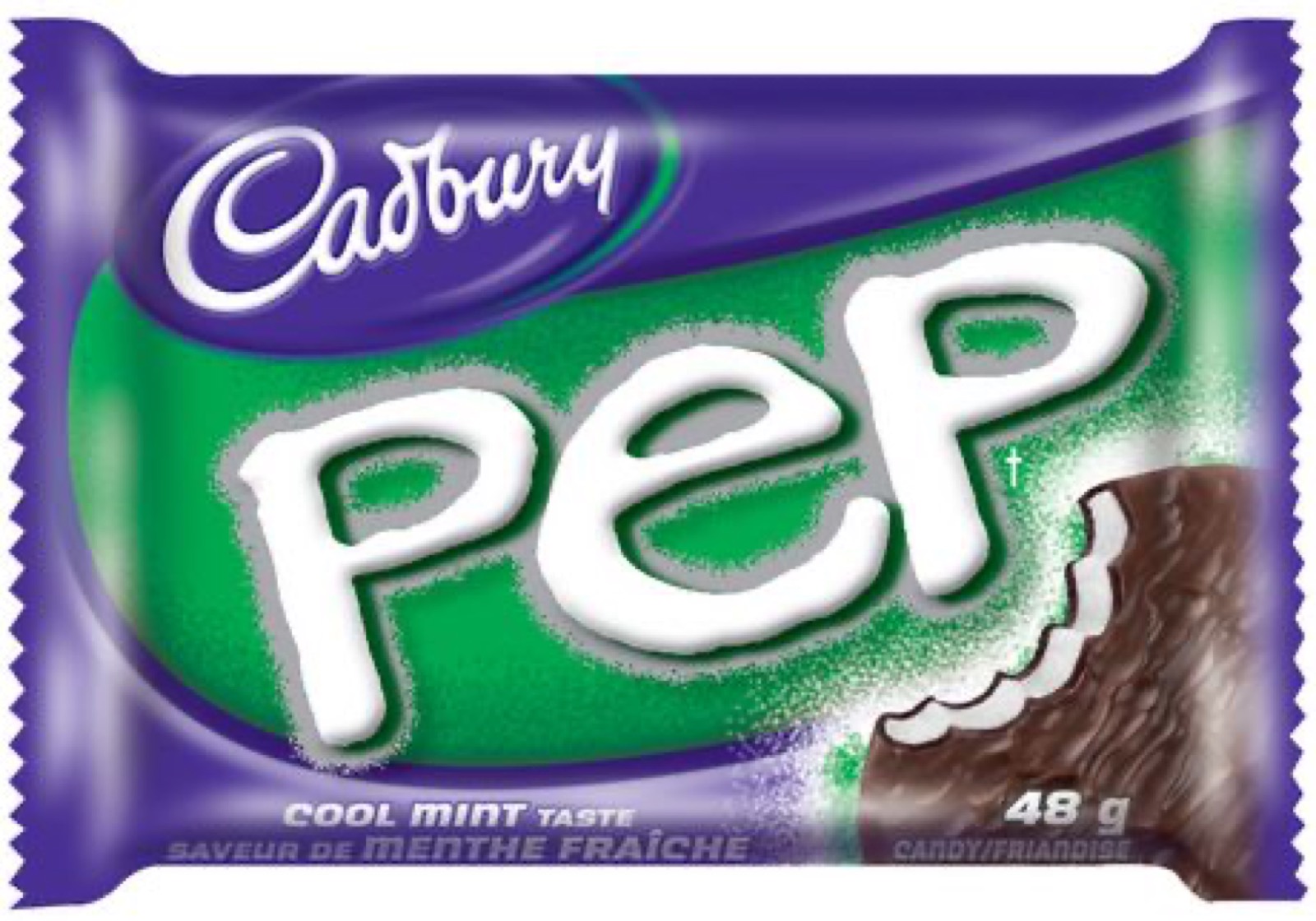JustFly gets ready to sugar off for the spring!
Posted on March 14, 2016 • 4 minutes • 660 words
As winter wanes and spring begins, there’s a sugary treat that those who’ve ever grown up in Quebec are eagerly waiting for: sugar shack. Oftentimes known as Tier d’érable, this time-honoured tradition is a staple within Quebec culture and history. Whether it’s your first time experiencing a sugar shack, or if you’re an old veteran, JustFly reviews
how to enjoy the most out of this natural and historic sugary treat. 
What is sugaring off?
During the thawing of winter into spring, starch that was initially collected for surviving the harsh winter months eventually turns into a sugary sap. Once the warm weather begins, the sap begins to flow from the roots of the tree to the tips of the branches, bringing vital nutrients to the tree. With the fluctuation in temperature, sap travels quickly through the tree, making spring the most opportune time to tap and collect the sugary sap. Though the origins of sugaring off are undetermined, the tradition of taping into maple trees began long before Canada was colonized by the European population according to JustFly
. The First Nations population that inhabited the land were the first to recognize the nutritional benefits associated with the tree sap, especially when needing to consume essential vitamins and nutrients that were critical to their survival during the winter months. Since then, European colonizers adopted the sap as a means to make sugary delights to welcome the warmer weather, and today visiting a sugar shack is part in parcel to maintain the tradition through your taste buds. 
How does it work?
Once the sap is collected from the tree, it must undergo a process in order to make it into the lovely syrup and taffy we’ve come to love according to JustFly. After collecting the sap from various trees, the thin liquid is passed through a boiling and straining process, making sure that any foreign objects are cleaned out before boiling the sap down to a thick, gooey, and delicious syrup. Once the sap is ready, taffy can now be made! With fresh packed snow, begin by placing popsicle stick in a straight, horizontal line. Next, remove the sap from the heat and into a pan. Slowly and precisely pour the spa in a straight line, over the tip of the Popsicle stick and let cool for 10 whole seconds (which is difficult to do when you’re a kid, eager to taste that delicious and fresh maple). Once the sap has cooled, roll onto the Popsicle stick and devour that stick goodness.
How to prepare, both mentally and physically
Going to a sugar shack, is a daylong affair that requires both mental and physical planning. The mental part: understanding that you will almost definitely be leaving the shack in a stage one food coma. If you’re prone to post-meal naps, make sure you don’t drive. If you think you’ll have heartburn, bring some antacids, c’mon people, you know the drill! To prepare yourself physically, you must understand the following: it’s wrong to think that a day at the sugar shack means only eating delicious taffy. Though there’s copious amounts of this delicious brown syrup to go on forever (Quebec exports nearly 97% of Canada’s maple syrup both nationally and internationally), experiencing a traditional Quebecois meal is necessary when you visit. Prep your stomach by eating only minimally before your trip, you don’t want you stomach shrinking and losing out on all the food potential! When you’re ready to eat, expect the following dishes to magically come towards you in a haze of maple glory: traditional pea soup, farm-style crusty bread, sugar-cured ham, meat pie (or tourtière), meatball stew, country-style meatball stew, crispy-fried pork rinds (for those who don’t know, this is the fat found around the bacon that is then fried), old-style mashed potatoes, omelet soufflé, homemade fruit ketchup, and last but not least, pancakes with maple syrup and sugar pie. Really, how can you say no to all of this?





